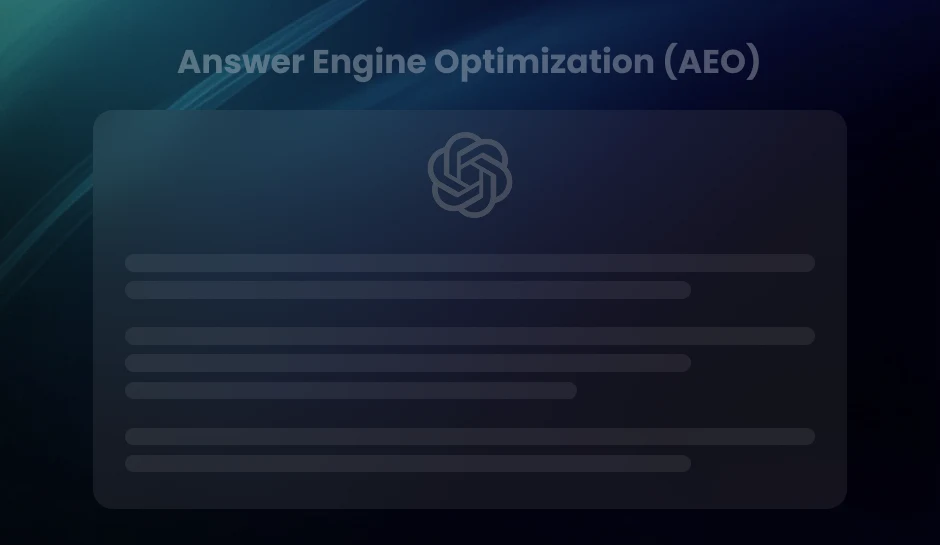
Mastering Marketing Performance Attribution Implementation: From Data to Decisions
Struggling to connect marketing efforts to results? This comprehensive guide to performance attribution implementation shows you how to collect unified data, build accurate models, and optimize spend based on real impact, not assumptions.
Marketing performance attribution identifies which marketing efforts drive results, not by guesswork, but through data-backed insights. By connecting specific touchpoints with outcomes such as conversions or revenue, attribution plays a crucial role in modern marketing. It eliminates reliance on assumptions, replacing gut feelings with measurable evidence.
Implementation makes this shift possible. Without deliberate execution, attribution models remain hypothetical. A data-driven marketing strategy prioritizes accurate measurement, continuous analysis, and tactical alignment with performance goals. That’s where attribution becomes more than a report – it becomes a roadmap.
Over the past decade, marketers have moved from intuition-based decisions to performance-verified strategies. ROI no longer hides behind campaign impressions or engagement rates. Today, attribution quantifies cause and effect. Get familiar with the key terms – attribution pinpoints the impact, measurement validates performance, implementation operationalizes the model, strategy defines the objective, and ROI confirms success.
Data Integration and Collection: Building the Engine
Connecting the Dots Across Data Sources
Modern marketing operates across a fragmented ecosystem. Website activity, email engagement, paid media interactions, CRM records, and offline touchpoints all hold valuable insight. Performance attribution only works when data from these sources flows into a unified framework.
- CRM systems capture customer profiles, sales interactions, and pipeline movement. Platforms like Salesforce or HubSpot provide structured datasets aligned with business objectives.
- Ad platforms, including Google Ads, Meta Ads, LinkedIn, and programmatic networks, deliver impression, click, and cost data tied to paid campaigns.
- Website analytics tools, such as Google Analytics 4, monitor user behavior, attribution parameters, and conversion paths on owned digital properties.
- Email marketing solutions, such as Braze or Iterable, track open rates, click-throughs, and engagement timelines.
- Offline sources-retail transactions, call center logs, and direct mail responses-round out the picture for businesses with hybrid models.
- Implement integration-first marketing stacks and systems built with interoperability in mind.
- Use event tracking standards across platforms to maintain data consistency.
- Invest in data governance frameworks to align cross-departmental inputs and rules.
- Web: Analyze micro-conversions like product detail views or form initiations to assess depth of interest.
- Social: Track seeded engagement across platforms to identify top drivers of acquisition.
- Email: Segment by open-to-click timeframes and click-to-site behavior to understand the strength of your nurture.
- Paid: Identify correlations between ad sequencing and downstream behavior, then feed data back into bidding strategies.
- Offline: Analyze visits in-store or calls to sales reps following online engagement to determine closing influence.
- Lead Velocity Rate (LVR): Captures daily and weekly lead flow trends. Anomalies in LVR often reflect top-of-funnel pressure points.
- Customer Acquisition Cost (CAC): Calculates real-time spend per acquired customer. Close monitoring prevents budget overreach in underperforming channels.
- Customer Lifetime Value (CLV): When paired with CAC, real-time CLV helps assess profitability per campaign while it’s still active.
- Conversion Rates: Segmented by channel or tactic, these reveal what’s working-where, when, and for whom.
- Return on Investment (ROI): Calculates the value returned for each dollar spent. Dynamic ROI scoring pinpoints high-performing assets in active campaigns.
- Customer Acquisition Cost (CAC): Attribution optimizes CAC by identifying costly, underperforming channels and reallocating spend.
- Return on Ad Spend (ROAS): Real-time attribution provides channel-specific ROAS, highlighting which ad sets drive results and which burn cash.
- LTV:CAC Ratio: Integrating customer lifetime value with attribution insights enables sustainable scaling. A strong LTV:CAC, often above 3:1, signals a healthy marketing ecosystem.
- Define KPIs and Goals: Identify measurable outcomes, such as cost per acquisition, customer lifetime value, or marketing-qualified leads. Set benchmarks tied to revenue contributions and campaign efficiency.
- Audit Current Tools and Data Sources: Inventory analytics platforms, CRM systems, ad networks, and offline data points. Evaluate data integrity, latency, duplication, and coverage.
- Select Attribution Models and Platforms: Match business needs with model types-choose rule-based, data-driven, or hybrid models depending on channel complexity and data maturity. Opt for platforms offering customizable pipelines, real-time dashboards, and ML-driven insights.
- Build Cross-Channel Tagging and Tracking Infrastructure: Deploy a unified tagging structure across paid, owned, and earned media. Integrate UTM parameters, pixels, first-party cookies, and server-side tagging to reduce data loss.
- Establish Governance and Ownership: Assign internal responsibility for maintaining the attribution model, ensuring data quality control, managing platform access, and establishing a reporting cadence. Identify cross-functional stakeholders from marketing, data science, BI, and finance.
- Pilot Implementation with Limited Channels: Test the initial setup across two or three performance channels, such as search, paid social, and email. Validate models based on conversion accuracy and lead scoring alignment.
- Continuous Testing and Optimization: Run A/B-modified attribution rules, evaluate predictive value, and re-weight channel credit dynamically. Use feedback loops to refine channel strategy and content placement.
- Technical Setup Complexity: Integrating legacy systems with modern attribution platforms can require API customization, server-side logic changes, and significant IT coordination.
- Internal Resistance: Shifting performance credit across departments often challenges established budget silos and KPIs. Without executive sponsorship, teams may prioritize other aspects over attribution insights.
- Budget Constraints: While top-tier solutions deliver robust attribution frameworks, platform licensing, data storage, and talent costs quickly escalate. Mid-market teams must strike a balance between scope and ROI sensitivity.
- Data Accessibility: Gaps in user ID stitching, offline conversions, or walled garden reporting limit visibility. Without clean, unified identifiers, model accuracy remains compromised.
- Begin with high-volume, trackable channels-search and paid social offer the quickest signal-to-noise validation.
- Embed a crawl-walk-run mentality, starting with last-click models, then progressing to linear or time decay before enabling data-driven logic.
- Lock in internal feedback loops at each stage to document learnings, identify bias in assumptions, and pivot attribution logic accordingly.
- Use insights from pilot channels to secure buy-in for deeper integration with CRM, offline events, and business intelligence platforms.
- Stability of credit allocation: Significant fluctuations across channels, month-to-month, may suggest data quality issues or model misalignment.
- Predictive validity: Comparing forecasted outcomes based on attribution analysis against actual campaign performance reveals whether the model is aligned with reality.
- Business correlation: Attribution-weighted conversions should exhibit a meaningful correlation with revenue trends and customer acquisition metrics.
- A significant increase in granularity of data collection, particularly across mobile, in-app, or connected TV environments.
- Entrance into new markets or regions with divergent user behavior patterns.
- Introduction of new conversion paths, such as subscriptions in addition to purchases.
- A shift from short-cycle to long-cycle sales processes, requiring more nuanced touchpoint tracking.
- Channel forecasts based on prior attribution returns drive initial spend decisions for upcoming quarters.
- Past touchpoint contribution scores shape media mix and frequency settings in campaign briefs.
- Creative iteration decisions rely on message sequencing insights surfaced through attribution paths.
- Run variant tests on message tone or call-to-action, then map results to attributed value rather than last-click conversions alone.
- Use attribution to isolate underperforming placements despite high top-of-funnel activity, then test new formats in high-contribution zones.
- Run holdout tests for high-credited media types to validate causality versus correlation in attribution scoring.
- Standardization of taxonomies: Aligning naming conventions for campaigns, channels, and products across departments ensures clean data ingestion as the model spans datasets.
- Centralization of attribution governance: A designated cross-functional operations group can own model tuning, technology vendor management, and distribution of insights across teams.
- Distribution of insights: Developing dashboards with tailored views for brand, growth, and finance teams increases org-wide trust and adoption.
- Attribution goes beyond assigning credit, it drives decisions across marketing, sales, and finance. When implemented effectively, it becomes a strategic framework that connects performance data with real-time business impact, turning gut-based planning into data-driven action.
- Without unified, clean data from across CRM systems, ad platforms, web analytics, and offline sources, attribution models break down. Investing in ETL pipelines, CDPs, and consistent tagging infrastructure is non-negotiable for success.
- Understanding the true paths your customers take is critical. Journey maps inform which touchpoints deserve credit, support model selection, and guide tactical decisions across channels. They ensure attribution logic reflects actual buyer behavior, not outdated assumptions.
- Start small, then scale smart. Move from last-click models to multi-touch or algorithmic ones as data maturity grows. Standardize taxonomy, establish governance, and integrate attribution insights into campaign planning, testing, and budget forecasting to embed attribution across the enterprise.
Harmonizing First-Party and Third-Party Data Streams
First-party data provides deterministic insight into on-site conversions, known identities, and owned-channel interactions. Third-party data, in contrast, offers scalable audience segments, anonymized intent signals, and behavioral overlays collected by external sources. Without integration across both, marketing attribution remains partial and often misleading.
Customer identity resolution platforms bring coherence. They link disparate identifiers (email, device ID, cookies, transaction records) to form unified customer profiles. This synthesis enriches attribution with behavioral granularity, driving higher-confidence model outputs.
Building ETL Pipelines to Power Attribution Analytics
Extract, transform, load (ETL) processes serve as the plumbing layer. These pipelines gather data from raw sources, reshape and normalize it, and deliver it into analytics environments. Structured pipelines ensure consistent timestamp formats, standardized campaign naming conventions, and deduplication across events.
The Advantage of a Centralized Customer Data Platform (CDP)
A CDP consolidates identity management, behavioral tracking, and data unification into one system. Unlike traditional data warehouses or CRMs, CDPs enable real-time segmentation and activation based on unified profiles.
Leading platforms such as Segment, Tealium, or BlueConic offer native integrations with key marketing and analytics tools. They ingest data from mobile apps, web, offline systems, and paid media, cleaning and stitching records into actionable customer views. Attribution models fed by such environments achieve higher accuracy and adaptability.
Breaking Down Data Silos with Practical Solutions
Disconnected data systems introduce lag, duplication, and blind spots. For example, if offline sales aren’t matched with digital touchpoints, conversion attribution becomes skewed toward online channels. This distortion leads to poor investment decisions.
To address silos:
Consolidation enables marketers to analyze impact across the full journey, from anonymous ad click to loyalty renewal, without losing fidelity across systems.
Pro Tip – To supercharge your performance attribution implementation, prioritize a centralized identity resolution layer early in your data architecture. When every touchpoint, across channels and devices, is tied back to a unified customer profile, your attribution models gain unmatched precision.
Mapping the Customer Journey: The Backbone of Accurate Attribution
Decoding Touchpoints Across Channels
Customer journeys stretch across a complex web of digital and offline environments. On one path, a prospect might discover a brand through a paid Instagram campaign, visit the website via Google Search, receive promotional content through email, and walk into a physical store for the final purchase. Every interaction-website visit, social like, email open, paid ad click, and in-store inquiry contributes to the decision-making process.
Mapping these touchpoints reveals the real pathways buyers follow, not just assumed ones. Web analytics tools track site behavior at the session level. Social media platforms track engagement tied to user IDs. Email marketing platforms log opens, clicks, bounces, and unsubscribes. Paid media dashboards provide impressions, CTR, cost per conversion, and customer segment interaction. Offline touchpoints, like call center logs, event check-ins, or POS system data, are layered in to complete the picture.
Creating Omnichannel Journey Visualizations
Static conversion funnels miss the nuance of modern buyer behavior. Omnichannel journey visualizations replace linear paths with dynamic diagrams that account for channel-switching and time lags. Visualization tools, such as Adobe Customer Journey Analytics or Salesforce Marketing Cloud’s Journey Builder, stitch together sequential behavior across platforms and devices.
This creates clarity around which channels interact most frequently, how customers transition from awareness to interest, and where friction slows down conversion. For example, seeing that 40% of bouncebacks on mobile email later convert via retargeted YouTube ads delivers high-value feedback for channel budget allocation.
Driving Attribution Logic With Journey Maps
Customer journey maps enable attribution models to move from guesswork to data-informed logic. They define the realistic paths consumers take, which informs model configuration-deciding whether to use position-based logic, algorithmic models, or data-driven machine learning approaches.
For instance, if a journey map indicates that engagement peaks during the second or third interaction, the credit distribution should shift accordingly. The model begins to reflect actual behavioral engagement, not outdated linear assumptions. Journey maps also support the identification of high-assistance touchpoints that don’t directly convert but consistently lead to those that do.
Enhancing Channel Effectiveness Through Journey Data
Access to journey-level data changes the way performance is measured. Instead of assessing a channel’s final-touch performance, marketers analyze its contribution to progressing users through the full buying process. A single visit to a landing page might not convert, but if that visit reliably precedes conversions via email, it starts earning budget based on assist value.
With robust journey mapping, attribution implementation gains both precision and flexibility. Models adapt to real-world user flows, marketing investments shift toward channel combinations that drive high-quality progress, and campaign outcomes improve not just at the point of sale but throughout the entire funnel.
Pro Tip – When mapping the customer journey for performance attribution implementation, don’t just track conversions, track micro-conversions. Pinpointing interactions helps reveal assist-driven channels that fuel downstream success. These subtle signals often unlock the biggest optimization wins.
Real-Time Performance Tracking and Analytics
Driving Agility Through Instant Insights
Marketing performance attribution delivers its highest value when insights arrive without lag. Agile marketing teams don’t wait for monthly reports. They monitor campaign effectiveness as it unfolds, adjusting spend, messaging, or targeting based on live data. Such responsiveness directly correlates with increased conversion efficiency and reduced wasted spend.
Real-time tracking translates campaign behavior into immediate action. Whether a sudden drop in lead quality or a spike in paid social ROI, identifying these signals in the moment allows for decisions rooted in current market realities, not stale assumptions.
Dashboards and KPIs: From Metrics to Decisions
Interactive dashboards centralize key marketing KPIs, enabling teams to understand cause-and-effect at a glance. The most effective implementations track:
Unlike static reports, these dashboards update continuously through APIs from media platforms, CRM systems, and analytics tools. This multi-source data ecosystem ensures attribution decisions factor in the full funnel performance, rather than snapshots.
Automated Alerts for Anomaly Detection
Real-time alert systems flag deviations in expected campaign behavior. These triggers can be configured to monitor any KPI-CTR spikes, bounce rate surges, or step-change in ROAS. The proactive response loop is derived directly from attribution-enabled intelligence, turning anomalies into opportunities rather than risks.
Pro Tip – To maximize the value of real-time performance tracking, set automated alerts not just for declines, but for unexpected spikes too. Surging ROI, CTR, or lead velocity can uncover breakout creatives or emerging audience segments. Catching these highs early lets you double down while momentum is at its peak.
Translating Attribution Insights into ROI and Tangible Performance Gains
Defining Attribution-Informed ROI
Return on Investment (ROI) transcends basic profit calculations when marketing performance attribution is fully implemented. Instead of evaluating campaigns in isolation, attribution-informed ROI isolates the contribution of individual touchpoints across the funnel. This approach enables marketers to connect upper-funnel activities, such as brand awareness campaigns, with downstream revenue outcomes.
For instance, multi-touch attribution (MTA) models calculate ROI by assigning weighted credit to each channel involved in a conversion path. As a result, the attributed ROI reflects how specific interactions generate measurable business value, rather than inflated metrics driven by last-click bias.
How Accurate Attribution Impacts Budget Allocation and Business Strategy
Accurate attribution unlocks precision in resource distribution. Instead of relying on historical spending patterns or gut instincts, marketers can reallocate budgets toward high-yielding channels that support their decisions with data. For example, if paid social shows a higher contribution to early-stage engagement but low conversion lift, the budget can be shifted to retargeting efforts that consistently close deals.
Strategic decisions, such as market expansion, product bundling, or seasonal promotions, are better informed by attribution insights that highlight real consumer behavior over time. When attribution is directly linked to margins and audience velocity in each channel, decision-makers prioritize initiatives with proven incremental impact, not just visibility.
Cross-Departmental Uses of Attribution Insights
Attribution data fuels more than marketing decisions. Sales teams can align outreach strategies by focusing on leads nurtured through high-performing channels. Product managers leverage engagement data to detect which features resonate most in driving conversions across segments.
Executives gain a unified view of marketing’s contribution to business growth, allowing clearer reporting to boards or investors. When attribution outcomes are baked into revenue forecasting models, organizations bridge the common divide between marketing outputs and financial performance expectations.
Attribution Metrics to Watch
From Vision to Execution: Your Roadmap to Marketing Performance Attribution
Step-by-Step Implementation Checklist
Translating a marketing performance attribution strategy into action demands a systematic approach. Without clear processes, misaligned tools or data flows will stall progress and derail decision-making accuracy. Here’s a structured checklist to follow for operationalizing attribution:
Common Implementation Challenges
Best Practices for Phased Roll-Out
From Insight to Impact: Scaling and Optimizing Attribution Over Time
Evaluating Attribution Performance Over Time
Attribution models don’t stand still. Campaign tactics shift, consumer behavior evolves, and new media channels emerge, so performance evaluation can’t be a one-time event. The most effective organizations establish a cadence of monthly or quarterly reviews of attribution output.
Metrics to assess attribution reliability include:
Integrating attribution reporting with ongoing KPI dashboards adds transparency into shifting performance dynamics and model behavior over time.
When to Evolve or Switch Attribution Models
No model remains optimal forever. Teams often outgrow simple rule-based approaches and need to evolve toward algorithmic or machine learning models as complexity increases. Major indicators that signal time for a change include:
Switching models should follow side-by-side testing and simulated backcasting over historical campaigns to benchmark variance in attribution credit distribution.
Embedding Attribution into Campaign Planning and Budgeting
Organizations that mature in attribution integrate their outputs directly into the campaign ideation phase, not just the report readout stage. This means setting media budgets and creative plans based on performance feedback loops.
Some practical applications:
As attribution pipelines become more sophisticated, marketers can treat attribution data as a programmable input into planning logic, rather than just a descriptive output.
Using Attribution Insights to Power Testing and Planning
Attribution isn’t just diagnostic; it becomes prescriptive when paired with experimentation. Incorporating attribution feedback into A/B testing strategies enables teams to optimize beyond just conversion rate.
Consider this synthesis:
By linking causation testing to attribution signals, media teams can anchor their planning not just in what works, but also in why it works.
Scaling Attribution from a Division to the Whole Enterprise
Many businesses start with attribution pilots confined to a product line, geographic region, or paid channel subset. Scaling beyond those silos requires three intertwined actions:
Enterprise-wide attribution success hinges not on broader tech deployment, but on the influence of wider business decisions. Attribution should answer questions beyond marketing, such as sales prioritization, product timing, or financial forecasting.
Pro Tip – Don’t treat attribution as a static report; embed it into campaign planning and creative testing workflows. Use attribution insights to shape your hypotheses, guide A/B test design, and inform media mix decisions.
Driving Growth Through Smarter Attribution Implementation
Marketing performance attribution no longer plays a supporting role; it defines how top marketing organizations allocate spend, test creative, optimize timing, and justify budget. Nothing else delivers clarity across the marketing funnel with the same degree of analytical rigor.
The shift from intuition-led decisions to data-driven investment isn’t theoretical. Organizations that implement attribution frameworks with precision and cross-functional alignment consistently see improvements in ROI, customer engagement, and time-to-value from campaigns. Adopting full-funnel attribution provides strategic clarity to product development, sales enablement, and finance forecasting.
Precision Replaces Guesswork
Smart attribution ends anecdotal budgeting. It links dollar-for-dollar investments to outcomes, surfacing the real contributors to acquisition, retention, and LTV. With the right combination of multi-touch attribution, MMM, and incrementality testing, teams can isolate the impact of each variable. This transforms performance reviews from debate into data-backed action plans.
No more overinvesting in underperforming channels. No more ambiguity over the impact of organic versus paid content. A methodical attribution layer brings visibility that scales with spend. And once automated tracking and AI-driven recommendations are layered in, optimization becomes continuous rather than reactive.
Execution Demands Alignment
Technology and models alone won’t deliver marketing precision. Execution depends on who owns the insights and who acts on them. Clarity requires buy-in not only from marketing leaders but also from finance, sales, analytics, and product teams. This cross-disciplinary coordination will make or break results.
Without centralized measurement governance and shared access to attribution intelligence, guesswork creeps back in through siloed dashboards and subjective KPIs. But when collaboration is embedded into the implementation roadmap through regular attribution reviews, joint campaign planning, and data asset sharing, teams move forward with aligned goals and shared success criteria.
Key Takeaways
Stop attributing success to assumptions. Build a framework that makes every dollar count-and proves it. Drop us a line or two at info@diggrowth.com to get started.
Ready to get started?
Increase your marketing ROI by 30% with custom dashboards & reports that present a clear picture of marketing effectiveness
Start Free Trial
Experience Premium Marketing Analytics At Budget-Friendly Pricing.

Learn how you can accurately measure return on marketing investment.
Additional Resources
Don’t Let AI Break Your Brand: What Every CMO Should Know
AI isn’t just another marketing tool. It’s changing...
Read full post postFrom Demos to Deployment: Why MCP Is the Foundation of Agentic AI
A quiet revolution is unfolding in AI. And...
Read full post postAnswer Engine Optimization (AEO): The New Frontier of SEO in 2025
As digital experiences continue to evolve, so does...
Read full post postFAQs
Marketing performance attribution is the process of determining which marketing efforts directly contribute to conversions and revenue. Instead of relying on assumptions or gut feel, attribution connects touchpoints, like ads, emails, or website visits, to actual business outcomes. This enables marketers to make smarter decisions, optimize campaigns in real time, and allocate budgets more effectively to maximize ROI.
Successful attribution hinges on four critical components: integrated, clean data across systems like CRMs, ad platforms, and web analytics; a unified tracking setup with standardized tags and event logs; accurate mapping of customer journeys across all channels; and a tailored attribution model that reflects the complexity of your sales funnel and marketing mix. Without these elements working in sync, attribution insights remain unreliable.
Attribution improves ROI by identifying the true drivers behind conversions, allowing marketers to see beyond vanity metrics like clicks or impressions. It brings visibility to high performing, often overlooked channels and flags wasteful spending on underperformers. As a result, budgets shift toward strategies that generate real value, campaign performance becomes more measurable, and marketing efficiency improves across the funnel.
Attribution implementation often faces technical hurdles, especially when integrating outdated or siloed systems. Internal resistance can arise when credit shifts away from familiar channels or departments. Budget constraints may limit access to advanced tools or skilled analysts. Additionally, a lack of unified customer identifiers can result in fragmented views of the buyer journey, lowering the accuracy of the model.
Businesses should consider evolving their attribution models when their data becomes more detailed, when they enter new markets with different user behaviors, or when their conversion paths grow more complex, such as adding subscriptions or offline touchpoints. If your current model no longer reflects actual performance or leads to misinformed spending, it's time to test new approaches and make the switch.
 Rahul Sachdeva
Rahul Sachdeva  Arpit Srivastava
Arpit Srivastava 

